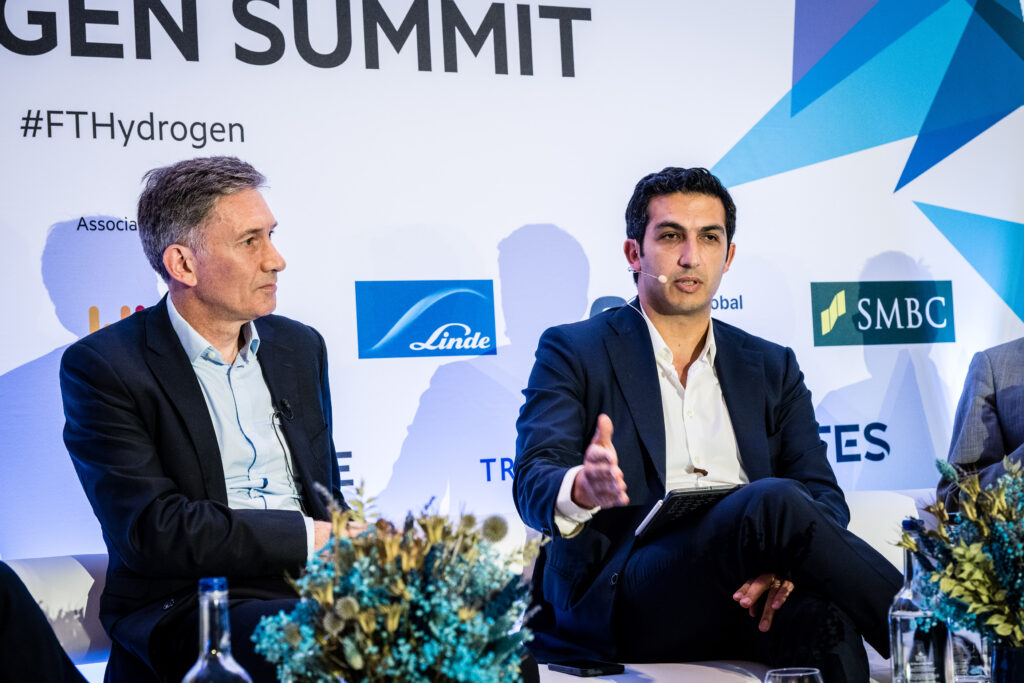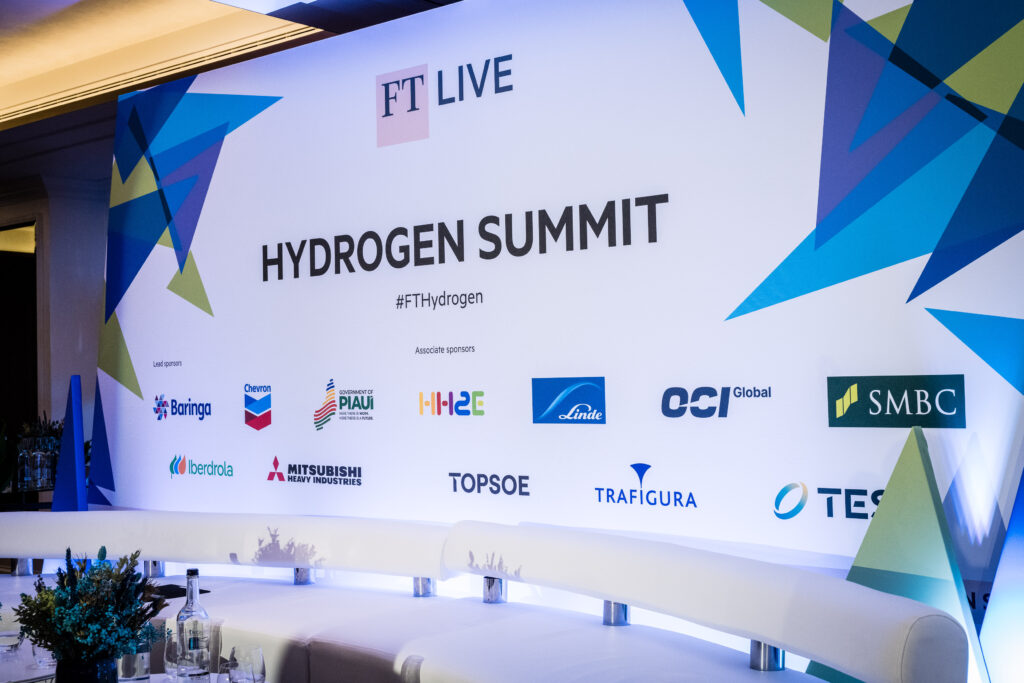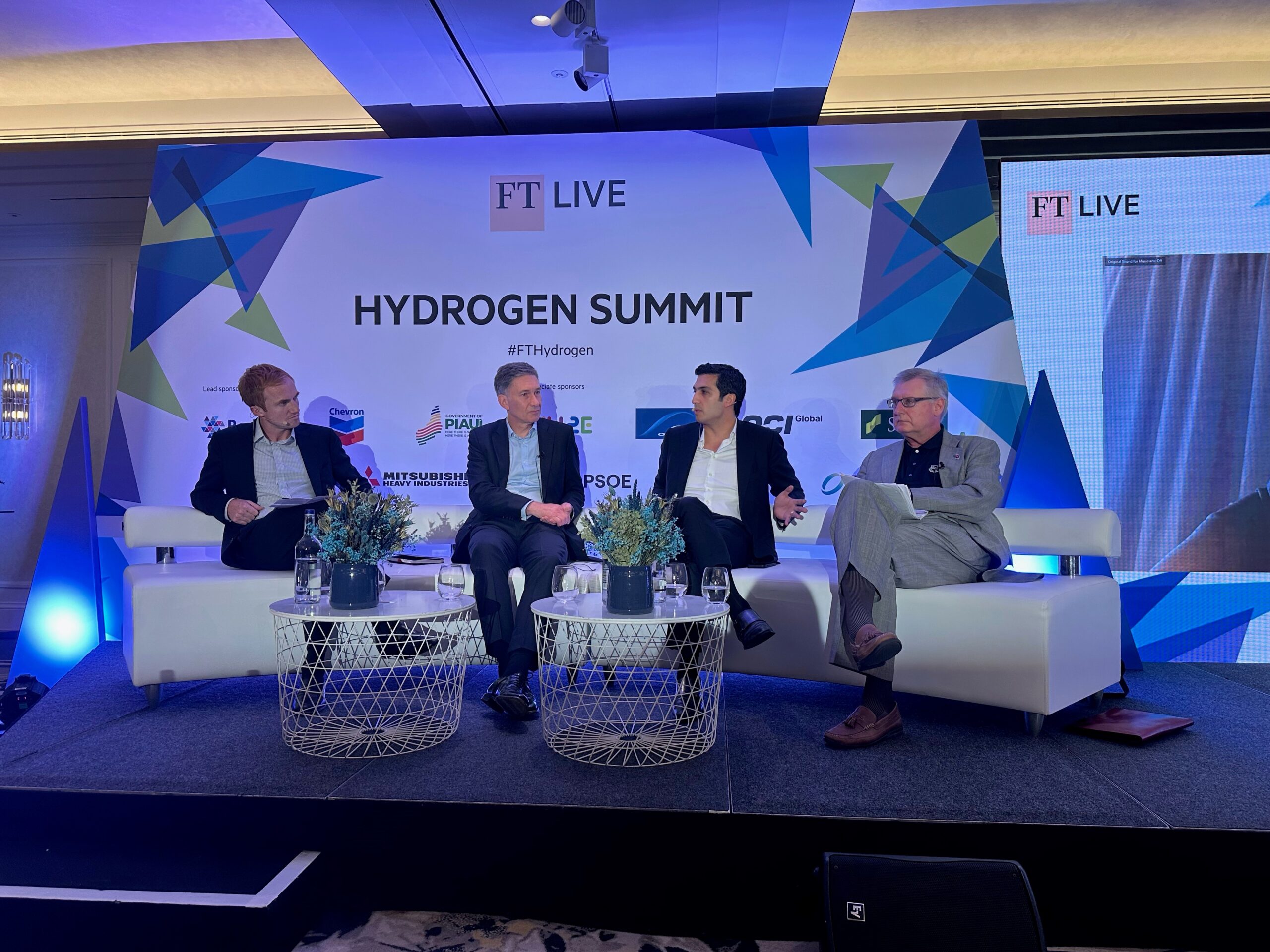Last week we were at the FT Hydrogen Summit where our CEO Ahmed El-Hoshy spoke on a panel looking at the potential for green methanol and ammonia to decarbonize shipping, and our VP Global Sustainability Hanh Nguyen and CEO of OCI Methanol Bashir Lebada hosted a roundtable looking at how regulators can stimulate and rationalize demand for clean hydrogen.
Is hydrogen the clean shipping fuel of the future? Our top takeaways from Ahmed’s panel:
- The “single solution fallacy”: We need to be thinking of a range of solutions to meet urgent decarbonization needs. Methanol is ready now, and ammonia will be an important future fuel too.
- The maritime industry is ready for decarbonization: Their customers – big FMCG companies facing increasing consumer pressure – are pushing for cleaner shipping so they can decarbonize their entire value-chains.
- Collaboration needs to come first: New relationships are going to be formed – between industry and government, but also between shipping companies, fuel suppliers and port authorities as they are tied together through regulation.
- Infrastructure is crucial: We need infrastructure in place, crucially in ports, in order for green shipping to become a reality quickly. That will require investment from companies and from governments in the form of incentives.
- “Safety has always been the mantra of shipping”: One thing that won’t change is the dedication to safety. As new fuels reach the maritime sector, new safety frameworks are also being adopted

Our key takeaways from other sessions:
- From Grey To Green – The Pathway to a Clean Hydrogen Market
- “We’re looking at an industrial revolution”: It’s a challenge bigger than any one company or country.
- “We can’t wait for the perfect solution”: This is so urgent we should be looking at all kinds of solutions and building the hydrogen economy as fast as possible.
- The “hydrogen rainbow” has been useful but we need to move on: We’re now at a stage where we need to move on and focus on emissions so we can make effective policies and pricing.
“The hydrogen rainbow has been useful but we need to move on now and talk about carbon intensity”
- Enabling Finance and Policy Frameworks for Project Development
- Price mechanisms are needed: For the hydrogen ecosystem to scale quickly, price mechanisms are crucial for de-risking projects.
- Sharing the load: The successful projects are part of hydrogen valleys or clusters so they can share the risks associated with project development.
- “The IRA is still distorting the market”: The package has made it more credible to build a whole project and steered people to the US where the economic viability is clearer.
- Can Electrolyzer Production Keep Pace with the Industry’s Ambitions?
- We need to act together: The whole chain needs to scale up together so we can come online as a connected hydrogen ecosystem.
- Regulation needs to be in place: Like with any element of the ecosystem, the electrolyzer industry needs the regulatory incentives to invest in scaling up to meet our global decarbonization needs.
- People need to buy into the hydrogen story together: There is a hurdle to overcome in wider understanding of hydrogen. We need everyone from regulators to the general public to understand how hydrogen is a critical piece of the decarbonization puzzle.
“Green hydrogen needs primarily to be used as an alternative feedstock by industries where grey hydrogen is being used in significant volumes today.”
- Will Hydrogen be the Silver Bullet for Industry?
- We need pioneers: We need first-movers and leaders willing to leverage their advantages -whatever they are- to kickstart the ecosystem.
- All the elements are in place: The technology is in place, the money is there, what is missing is the de-risking of offtake and visibility of regulatory frameworks.
- Hydrogen is indispensable: It’s not the only solution to decarbonizing the world, but hydrogen has a crucial role particularly in hard-to-abate sectors like shipping.

